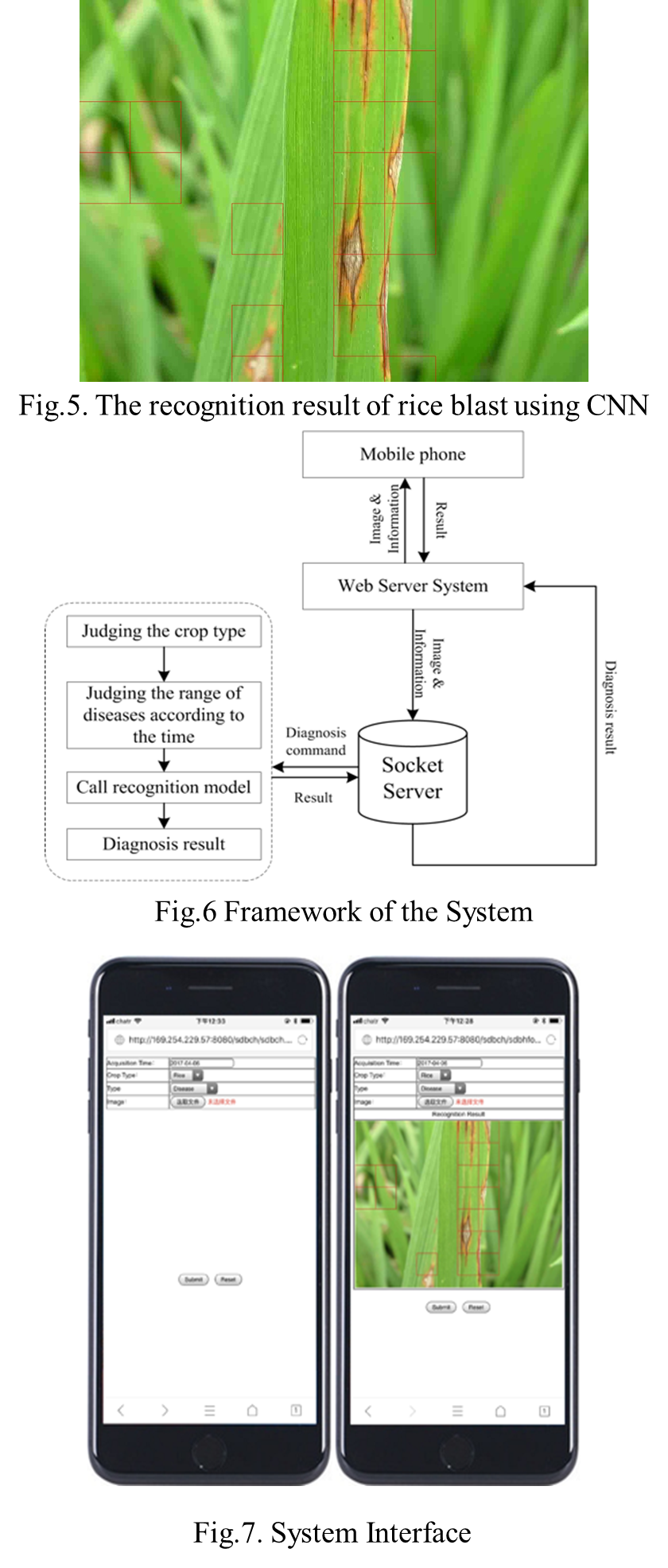Rice as a food source provides protein and energy to more than half of the world's population. Unfortunately, rice diseases have caused a great deal of loss in yield, and rice blast disease is considered as one of the main culprits. Currently, diagnosis of rice blast is often manually conducted and this is subjective and time-consuming even for well-experienced experts. In modern agricultural practices, it is very important to manage pests and diseases using highly efficient methods with minimum damage to the environment. In recent decades, combined with crop images, computer-aided diagnostic methods have become dominant for monitoring crop diseases and pests. At present, deep convolutional neural network (CNN) is generally considered the state-of-the-art solution in image recognition. With full consideration of CNN’s excellent performance, we propose a method that uses CNN for rice blast image feature extraction and disease classification. We establish in this work a rice blast disease dataset and use it for training and testing a disease classification model (Fig.1). We conduct comparative experiments for rice blast disease recognition with two traditional feature extraction methods, LBPH and Haar-WT. As well, we combine an SVM classifier with the deep features extracted from the CNN to further investigate and verify the effectiveness of deep features of CNN.
As shown in Fig. 2, the CNN model contains four convolutional layers, four max-pooling layers, and two fully connected layers, and ReLU is added after each convolutional layer. To avoid over-fitting, one spatial dropout layer is added after the C5 layer, and another dropout layer is added after the F9 layer. The t-SNE method is used to visualize the feature maps of CNN, LBPH, and Haar-WT using the same dataset. Fig.3 (a)-(c) present the maps of the S8 layer features of CNN, LBPH features, and Harr-WT, respectively. This result suggests that the features extracted using CNN are more discriminative than those extracted using LBPH and Haar-WT. To further explore the effect of the features extracted by CNN, we conduct comparative experiment and quantitatively analyze in terms of accuracy, ROC, and AUC. The ROC curves of CNN+Softmax, CNN+SVM, LBPH+SVM, and Haar-WT+SVM as shown in Fig.4. The ROC curves verify that the features extracted using CNN can be effective in solving the rice blast classification problem. An example classification result of the CNN model as shown in Fig.5. The example demonstrates that the CNN model can correctly and effectively recognize almost all of the rice blast lesions. A crop disease automatic diagnosis system was developed based on crop disease feature extraction and classification CNN model. The Framework and System Interface as shown in Fig.6 and Fig.7.
The evaluation results show that the high-level features extracted by CNN are more discriminative and effective than LBPH (local binary patterns histograms) and Haar-WT (Wavelet Transform). Moreover, quantitative evaluation results indicate that CNN with Softmax and CNN with support vector machine (SVM) have better receiver operating characteristic (ROC) curves than both LBPH plus an SVM as the classifier and Haar-WT plus an SVM as the classifier. Therefore, the CNN model is a outperforming method for rice blast disease recognition and can be potentially employed in practical applications.




